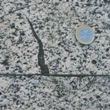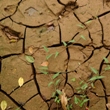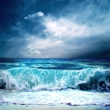Uncovering the Secrets of an Earthquake


a Multidisciplinary Study of earthquake fault
Italian researcher Dr. Giulio Di Toro is aiming at a better understanding of fault mechanics at seismic slip rates, one of the "hottest" topics in fault and earthquake mechanics at present. As part of the research, one of the most powerful earthquake simulators, "SHIVA" (Slow to High Velocity Apparatus), has been successfully installed in Rome. SHIVA simulates the extreme conditions of deformation typical of earthquakes: high pressure and moving rocks, just as happens in nature. Under these deformation pressures some rocks have been found to melt. The analysis of the original data collected shall provide an unprecedented insight into the mechanics of seismic faulting and will help to improve industrial techniques to handle solid material. This study has additional implications for understanding other friction-controlled processes, for instance in rock landslide.
- Researcher: Dr. Giulio di Toro, ERC Starting Grant 2007
- Host Institution: Istituto Nazionale di Geofisica E Vulcanologia, Roma, Italy.
-
Project: Uncovering the Secrets of an Earthquake: a Multidisciplinary Study of earthquake fault
Watch the SHIVA video

Unravelling physical and chemical processes in faulting phenomenas
The focus of this research, led by Dr. Cristiano Collettini, is the collection of physical and chemical data. He and his team will also study deformation processes at any scale and including a time window ranging from the seismic cycle to entire geologic fault history.
- Researcher: Dr. Cristiano Collettini, ERC Starting Grant 2010
- Host Institution: Istituto Nazionale di Geofisica E Vulcanologia, Roma, Italy
- Project: InteGrated Laboratories to investigate the mechanics of ASeismic vs. Seismic faulting (GLASS)

Solid buildings to resist earthquake shaking
The DARE project investigates the possibility of allowing below-ground support systems to buildings in response to strong seismic shaking. In conventional architecture, certain thresholds are applied to below-ground support systems that would imply irreparable damage for a building if they are not respected. However, during the shaking produced in a seism, going beyond these limits for a short period of time might actually be beneficial. The aim of the project is to avoid permanent displacements, rotations or injuries in buildings and monuments during an earthquake.
- Researcher: Dr. George Gazetas, ERC Advanced Grant 2008
- Host Institution: National Technical University of Athens, Greece
- Project: Soil Foundation Structure Systems beyond Conventional Seismic Failure Thresholds: Application to New or Existing Structures and Monuments (DARE)

Anthropological perspective of environmental disasters
The study of local, social responses to environmental disasters related to water is the aim of this research conducted by researcher Dr. Kirsten Hastrup. The objective is to contribute to a renewed theory of social resilience that builds on the actualities of social life in distinct localities, and on human agency as the basis for people's quest for certainty. The project will allow for a new, general understanding of the effects of environmental disaster on social life, and of the responsibility that people take locally to ensure the survival of their community.
- Researcher: Dr. Kirsten Hastrup, ERC Advanced Grant 2008
- Host Institution: Kobenhavns Universitet, Denmark
- Project: Natural environmental disasters and social resilience in anthropological perspective (WATERWORLDS)

Mathematical models for water flows
The aim is to advance the state-of-the-art of water flows thanks to numerical simulation, experimental feedback and the gathering of field data. This is of interest, for example, in the context of wave-current interactions and for a better understanding of tsunami waves. Due to the general public's interest in tsunamis, one of the objectives of the project is to have a positive impact on the perception of science by society and on the raising of scientific interest of the younger generation through public lectures and contacts with high-schools.
- Researcher: Prof. Adrian Mircea Constantin, ERC Advanced Grant 2010
- Host institution: University of Vienna, Austria
- Project: Nonlinear studies of water flows with vorticity (NWFV)
Select Theme: "FP7-IDEAS".

